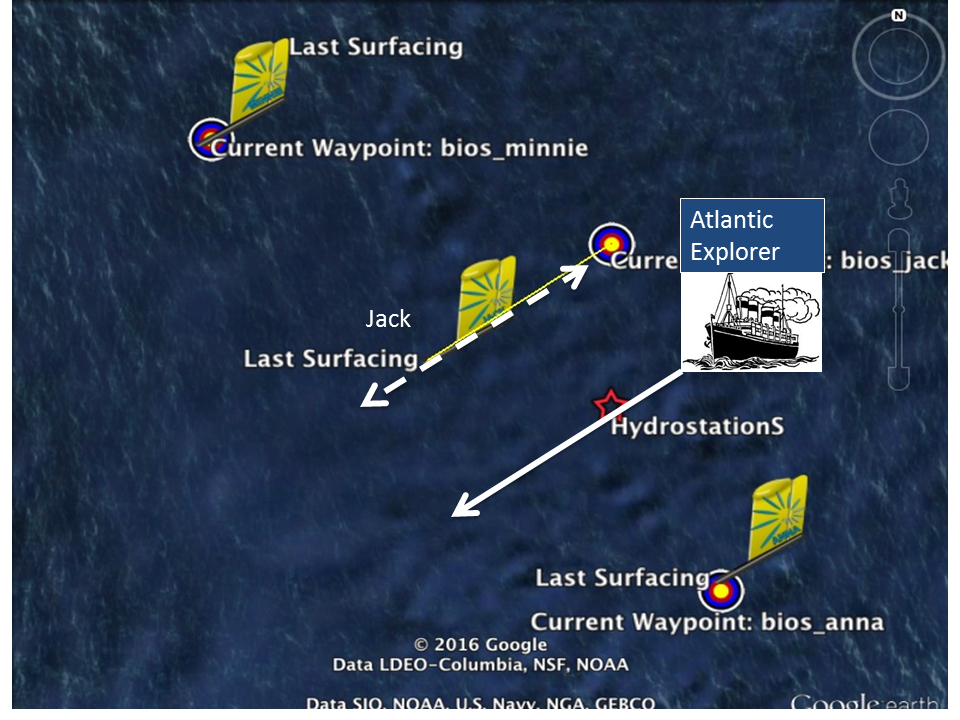Three gliders coordinated with R/V Atlantic Explorer for a 4-day field program at Hydrostation S, which included plankton tows and large volume water sampling for microbial and genomic analyses. One of the scientific goals of the BIOS-SCOPE program is to quantify diurnal migrations of zooplankton by conducting several MOCNESS tows (2 at night, 2 during daylight hours) sampling 8 different depth regimes on each tow. The gliders (Jack, Anna and Minnie) were used to obtain physical and biochemical profiles of the water column before, during, and after shipboard sampling. In addition to providing water column context to the experiment, an important concept was being tested: to what extent can a glider-based acoustic current profiler (ACP) be used to provide routine estimates of zooplankton biomass?
The gliders were positioned to closely coordinate with the ship (see accompanying figure). Based on winds and currents, the ship set up a trackline for deploying the plankton nets running NE to SW. Glider Jack, carrying an integrated 600-kHz ACP and other scientific sensors tracked back and forth along a parallel line < 2 miles from the ship’s course. Meanwhile, Anna and Minnie were stationed to the SE and NW obtaining 16 profiles daily of temperature, salinity, oxygen, chlorophyll and optical backscatter. Minnie additionally carried a SUNA sensor to measure water column nitrate (a limiting nutrient in the Sargasso Sea). The glider data will be integrated into the full BIOS-SCOPE suite of measurements and analyzed this fall when the gliders are recovered and returned to the MAGIC Lab.


